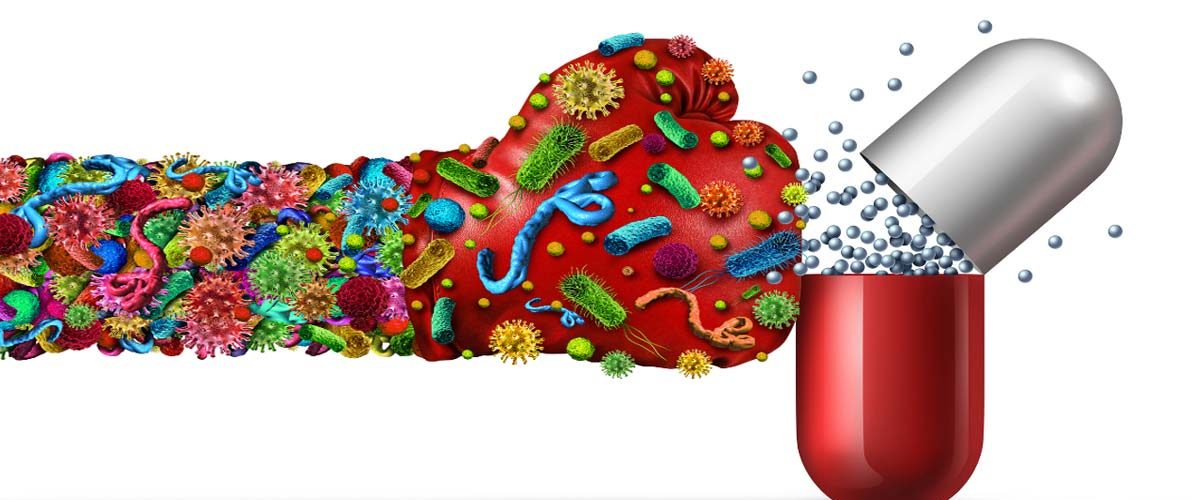The synthesis or production of a large number of antibiotics over the last 3 decades, has caused smug about the threat of bacterial resistance. The dawn of multi-drug resistance in disease-causing bacteria is jeopardizing the value of antibiotics, which have in the past transformed the whole medical science and the way diseases were treated. This crisis is attributed to the misuse of drugs and unavailability of newer antibiotics to exigent supervisory needs and limited economical incentives.
A notable effort to minimize the pace of resistance by exploring developing bacteria has been made by J.O. Nnaji and the team as they studied the occurrence anddistribution of seldom antibiotic resistance genes in Gram-Negative Bacteria (GNB) in Poultry.
The rapid rise in the prevalence of antibiotic-resistant microorganisms, particularly the ones having multi-drug-resistance mechanisms like extended-spectrum β-lactamases (ESBLs), AmpC, and Metallo-beta-lactamases is a major concern worldwide because they make it difficult to treat bacterial infections and illnesses. ESBLs have the plasmid-mediated β-lactamases enzyme that hydrolyzes and give resistance to broad-spectrum cephalosporins. Whereas, AmpC β-lactamases are the cephalosporinases that are commonly encoded on the chromosomes of Enterobacteriaceae, to allow resistance against cephalosporins and penicillin. The majority of antibiotics like cephalosporins and penicillin are used in the preferred treatment regime for many bacteria-related infections.
These ESBLs and AmpC are found in GNB like Pseudomonas aeruginosa, Escherichia coli, and Klebsiella pneumonia. These microorganisms are resistant to many potent antibiotics commonly in use. These bacterial pathogens are the cause of many nosocomial and community-acquired infections globally, making the selection of antibiotics difficult and posing a threat to the already chocked health sector. Infectious disease management is problematic thanks to the genetic mobile elements like plasmids, transposons, integrons.
Farm animals and poultry are an important component in the spread of such resistant bacteria, by excessive disposal of slaughterhouse and poultry wastes, rich in antibiotic resistance gene in GNB. For investigation of the occurrence and distribution of these antibiotic resistance genes in GNB like E. coli, Klebsiella, and Pseudomonas from slaughterhouse and poultry milieus in Nigeria.

For results of ESBL production, the phenotypical analysis confirmed the presence of mostly E. coli, and less Klebsiellaspp and least P. aeruginosa spp. More than half of the organisms were found to have AmpC enzyme, due to the irrational and excessive use of antibiotics for the propagation of farm animals and poultry worldwide. Astonishingly the AmpC and ESBL positive bacteria were found to have a complete susceptibility towards carbapenes (commonly used antibiotic for treating multi-drug resistance bacterial infections.
While, both ESBL and AmpC- producing bacterial pathogens were resistant to multiply against antibiotic groups used, like cephalosporins, antimetabolites, aminoglycosides, fluoroquinolones, and aztreonam. For the prevalence, detected by PCR, the CTX-M gene of ESBL was highly prevalent than ACC-M, MOX-M, and DHA-M genes (of AmpC) and CTX-M, SHV-1, and TEM genes (of ESBL). These enzyme producers ESBL and AmpC genes pose the biggest threat to infection control, treatment, and management as they are major contributors to failures of treatment.
The study, therefore, reported the emergence of resistant bacteria like E. coli, Klebsiellasp, and P. aeruginosa which can produce AmpC and ESBL enzymes that bestows pathogens the power to fight and resist antibiotics. These enzymes producing bacteria are abundant in poultry and slaughterhouse wastes which could be a potential reservoir for the spread of antibiotic-resistant genes among humans, therefore, necessary actions should be taken for the surveillance measures against the emergence and community spread of suchbacteria.
Keywords:
Multidrug resistance, Gram-Negative Bacteria (GNB), drug resistance, antibiotic-resistance, extended-spectrum β-lactamases (ESBLs), AmpC and Metallo-beta-lactamases
















Add comment